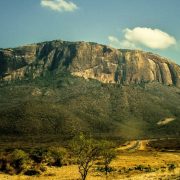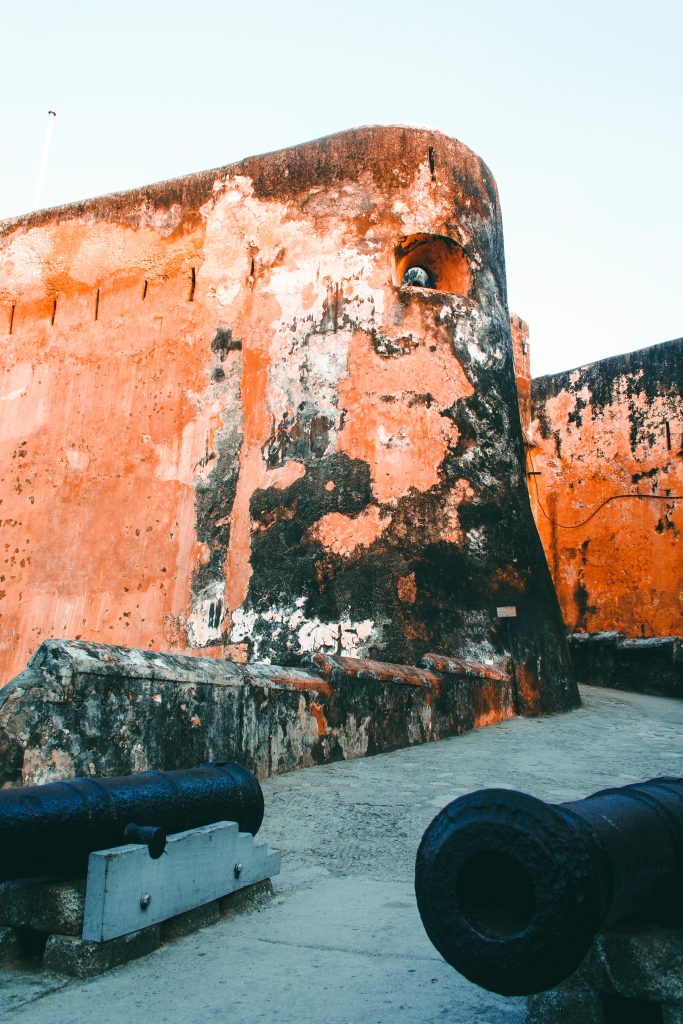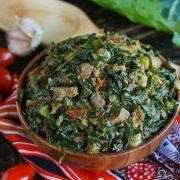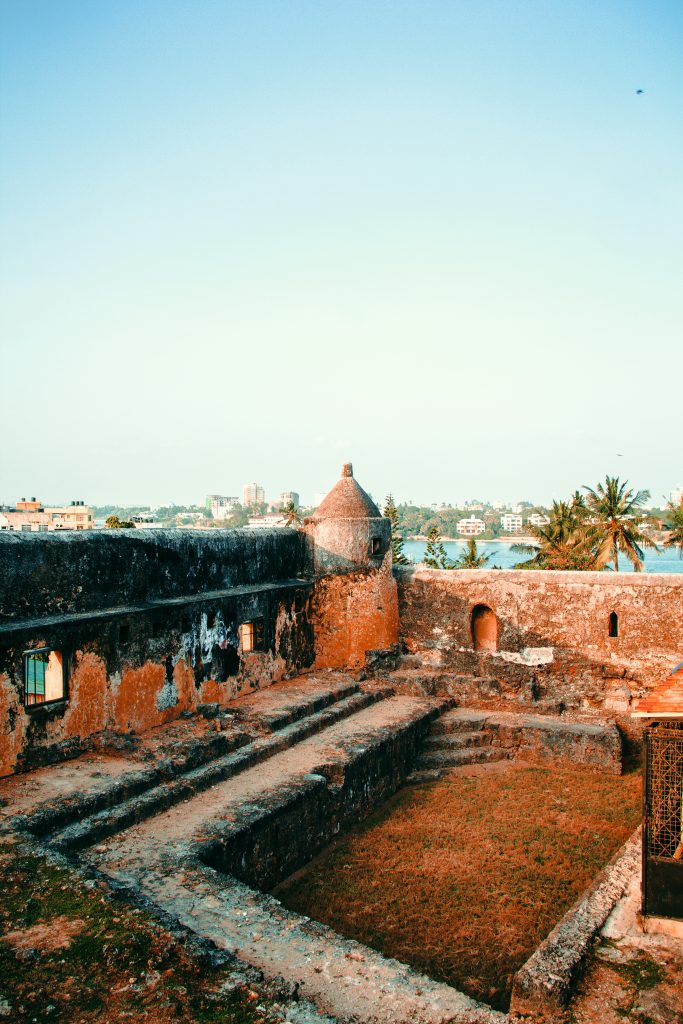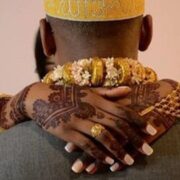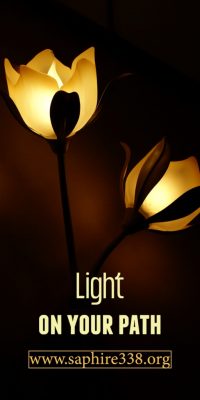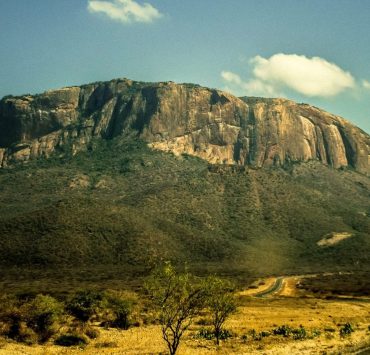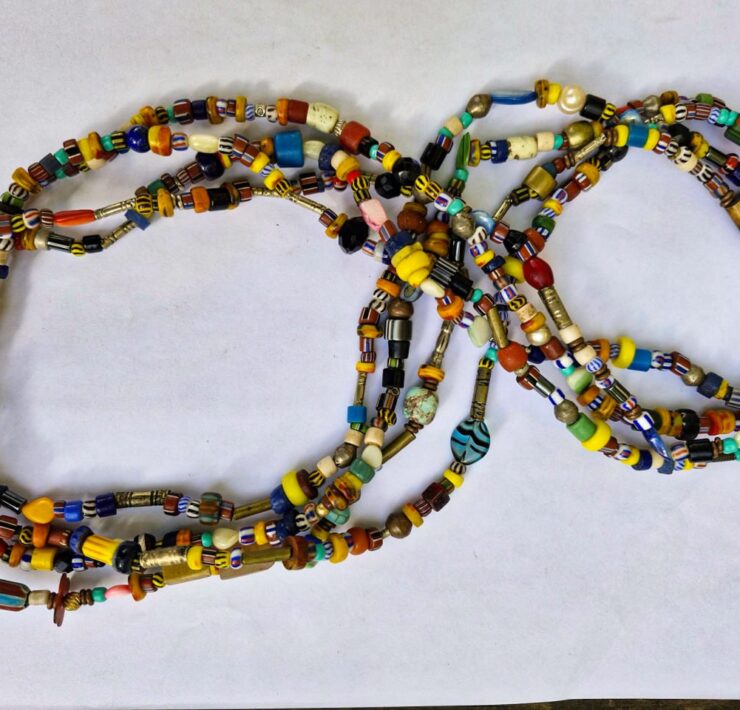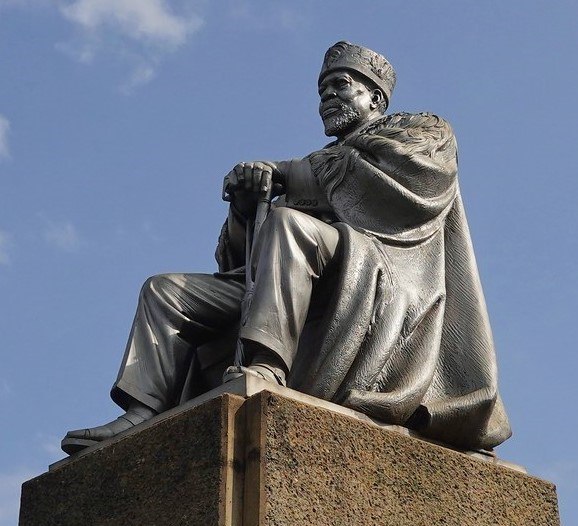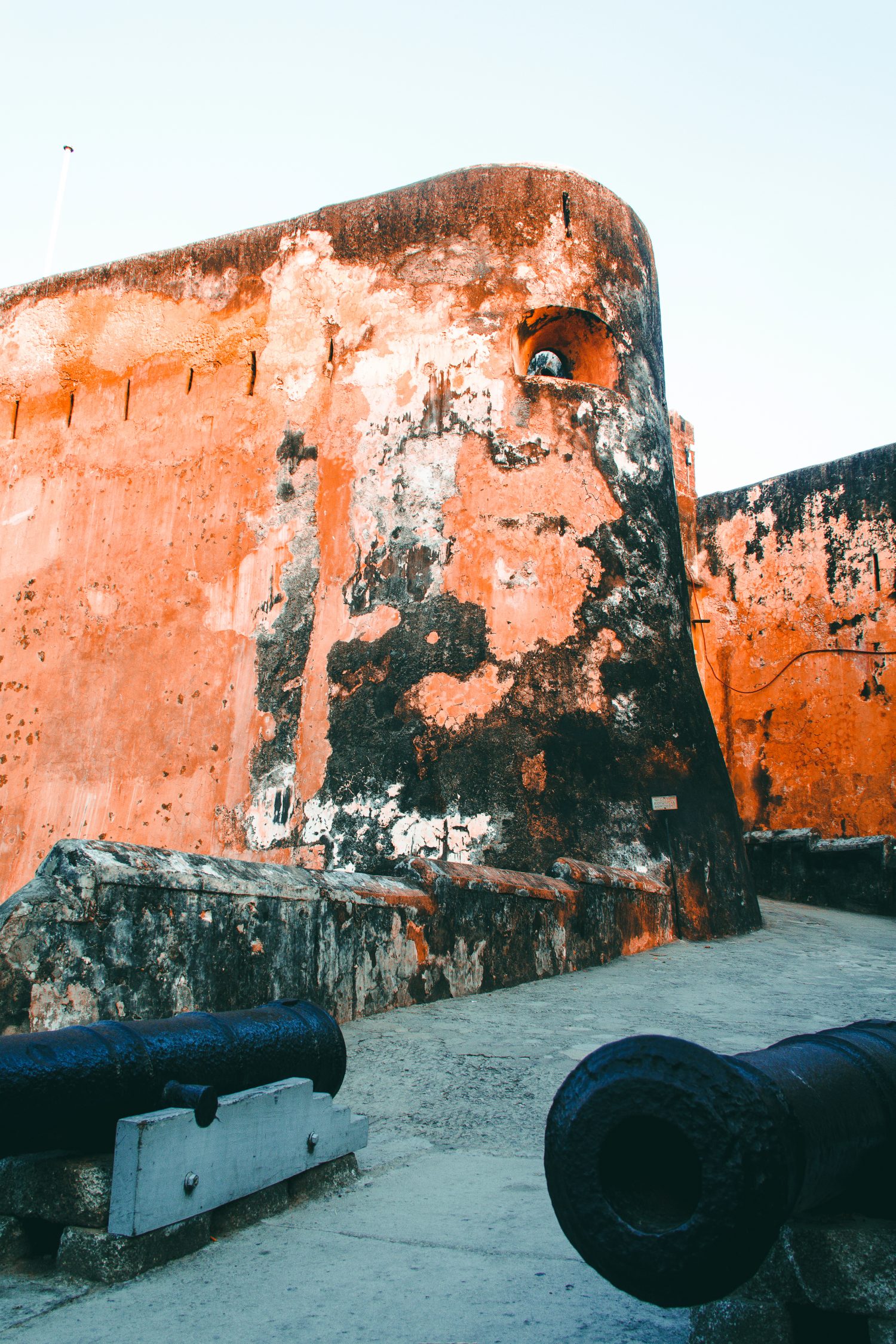
Passionate about getting God's message concerning Afrika and the end…
Read Next
FORT JESUS MUSEUM, MOMBASA
THE FORT OF JESUS
One of the most outstanding examples of Portuguese military architecture… designed by an Italian, the story of Fort Jesus, Mombasa, has been told by many and has been told many times over. Since I was a child, I have visited this old giant which has bravely withstood the trials of time to tell a tale of courage, beauty and sacrifice. The Fort is the last remaining structure of the Portuguese age, all the rest along Mombasa’s coast, lie in ruins, while the Fort still stands strong. Now a Museum, with UNESCO World Heritage Site status(coupled with the construction of a protective wall being built by the waters edge to prevent the structure from being destroyed by the ocean’s shifting tides and pounding waves), Fort Jesus stands as a testament to, not so much the ingenuity of man, as it does to the absolute sovereignty and wisdom of God. Fort Jesus or in my own words, the fortress of Jesus, is an imposing ancient architectural masterpiece, a magnificent historical reminder of the beauty of Africa. As an ancient military fortress which guarded the very eastern gate of Africa, it’s not unusual for visitors to be welcomed at the fortress gate by two powerful black canon guns, which I am sure in the days of their action, struck fear and awe in the hearts of both friends and enemies.
Building the Fortress
The Portuguese were the first people to have major maritime influence over the Indian Ocean, sailing forth to establish trade routes and to spread the message of Christianity far and wide from the mid 1400s. In the early 1500s Vasco da Gama discovered Mombasa and over a period of the next thirty years, the Portuguese returned from time to time to attack and raid the thriving port and major city in the Zanzibar Sultanate. Eventually constructing Fort Jesus over 426 years ago and putting an end to Arab dominance in the area for about 100 years.
It took three years for the local Swahili laborers to complete the work using the coral that the Fort stands on as its base and lime, sand, clay, honey and jaggery, for the walls, they completed the defensive position of the Port of Mombasa for the Portuguese to occupy in 1596.
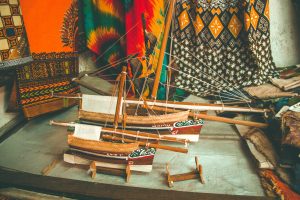 PIN IT
PIN IT
Jesus in Architecture
Designed in the shape of a Man – Jesus – with arms stretched out and lying on His back facing upwards – with head and arms close to the water and feet inland, the Fort was outfitted with everything the Portuguese needed to settle down and make a home for themselves. With two sets of soldiers’ barracks, an officers’ barracks, a kitchen, a dining area, a church, a dispensary, and a well of sweet water, Fort Jesus became not just a military base, but a home to a new spiritual reality forming at the tip of Africa. When this well was first dug, the water in the ground was found to be salty, so the Portuguese sealed the salty water section off and modified the well to enable it to collect rain water sufficient to supply their needs.
The Fort also had a parade ground, gun powder and munitions storage areas and eight watchtowers. There were multiple canon and rifle/archers’ ports along the walls facing the Indian Ocean and the access way to the Port. Portuguese canons, with a range of 200 meters, were backed by the diminutive soldiers with rifles as well as bows and arrows during times of battle. The fort was complete with a main entrance way to the street, a passageway, now known as the Passage of the Arches allowed the Portuguese to haul their munitions up to one of the storage areas carved into the coral with the help of the Swahili. A second passageway allowed them to bring in their food and medical supplies, and a third secret passageway would allow for a concealed escape in time of need.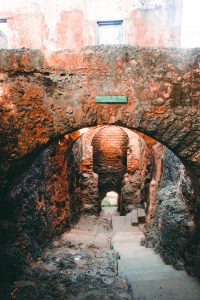 PIN IT
PIN IT
Story of love and sacrifice
It’s not stated whether the passageway was used during the time of the siege 100 years later, when the Omani Arabs mustered a force from the seat of the Sultan in Zanzibar and came to reclaim the territory which they had lost to the Portuguese soldiers a century back. What has been shared is that the brave Portuguese soldiers slowly starved to death until only 15 were left. The Arabs were able to scale the walls and take the fort and they demanded these last 15 renounce their faith in Jesus and convert to Islam. The 15 refused. And, as the story goes, 14 were slain and the 15th man kept alive in order to show the Arabs the gunpowder room.
Accompanied by three or four Omani Arabs, this little Portuguese Christian plotted something in his heart, a thing which none of his captors could not have imagined, else they would not have taken another step with him, but would probably have slain him where he stood with the others. Upon entering one of the gun powder storerooms, this last man standing unleashed the unexpected, blowing himself and his captors up using the gunpowder they had so highly prized, martyring himself, refusing to deny his Lord, he fell. And thus Fort Jesus was taken.
The Omani Arabs oddly enough, did not destroy Fort Jesus, but rather did what they could to make Fort Jesus ‘their own’ as much as possible. The Portuguese were said to be of small stature and therefore the forts walls were erected to a height of only 15 meters, which was sufficient for their needs. The Arabs, were said to be taller and so extended the height of the wall to 18 meters.
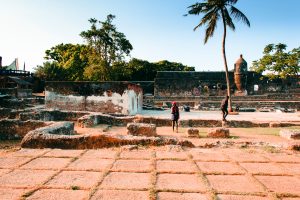 PIN IT
PIN IT
In 1728, the Portuguese retook Fort Jesus when the African soldiers mutinied against the Omani Arabs and the Sultan of Pate handed over the Fort to the Europeans. The following year, the people of Mombasa rose against the Portuguese who were put under seige and forced to surrender.
Eventually the Arabs ceded control of the Fort to the British, who turned it into a prison for the male and female Africans who wouldn’t play ‘nice’. Mekatilii wa Menza and Wanje wa Madorika being among those imprisoned by the British for defying the colonialists. But that, as they say, is a story for another day.
Thoughts:
The story of the Fort that is Jesus really blew my mind during a visit that the Msingi Afrika Magazine team made there this February. We had an amazing tour guide, a young man called Eric Maithya, who is still a student. Through his enthusiastic storytelling, it finally unfolded for me that Fort Jesus is two things. It is a Fort or a stronghold, a strongtower, a safe place. And it is a Man, the One Christ Jesus Who gave His life for all. I found it interesting that of all the historical sites at the coast, the one that God chose to preserve whole, is the one place that honors His Son.
The martyrdom of the Portuguese soldiers really struck a chord as I envisioned these half starved men, whose diet now was made up of rats, which had killed many of their companions, determined that they would not deny Christ, but would rather perish that He, Christ, will not deny them before the Father.
During this visit, we were taken to a recently constructed section of the Museum which detailed the way in which the Omani Arabs traded with the locals. Spices were traded for ivory and rhinoceros horns. I stood and wept inside me as I heard the LORD nudge me as He pointed out where the culture of Africans selling their birthright for temporal things had begun. However, redemption has come and Africa will once again rise to her place of influence in God.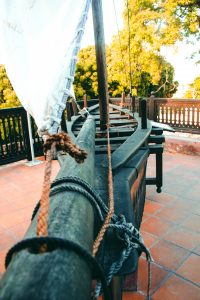 PIN IT
PIN IT
WISDOM FOR LIVING
We at Msingi Afrika Magazine sincerely appreciate the history of our beautiful Africa and the monuments in her. But here is our take on wisdom as it regards these things: That these places and structures are called ‘monuments’ simply shows that once upon a time, the structures and places were glorious and admired by many in the day of their glory. This is a fact of every monument, which clearly shows that no beauty, glory, honor, fame, power, authority, lasts forever – except that which God, Himself, sets up for His own purpose and plan. For there is He Who has made all things for His own pleasure and He alone will remain, when all things man made have gone.
So, you dear reader, you may be an African or non-African, but remember this: Nothing lasts forever and nothing will remain the same forever. Live your life in simplicity, humility before God, love yourself and others, build wisely – knowing that all things will become monuments and historical relics with time, only good for sight-seeing and educational purposes for the next generation. For as the name Fort Jesus implies, the only Fortress that will never become a monument is Jesus.
For counsel and wisdom to live in this age of the end of time, please use the contacts below.
counsel@msingiafrikamagazine.com
Subscribe now for updates from Msingi Afrika Magazine!
Receive notifications about new issues, products and offers.
What's Your Reaction?
 PIN IT
PIN ITPassionate about getting God's message concerning Afrika and the end times to the world, in order to heal, restore and rebirth Afrika to her true purpose and destiny in God.








